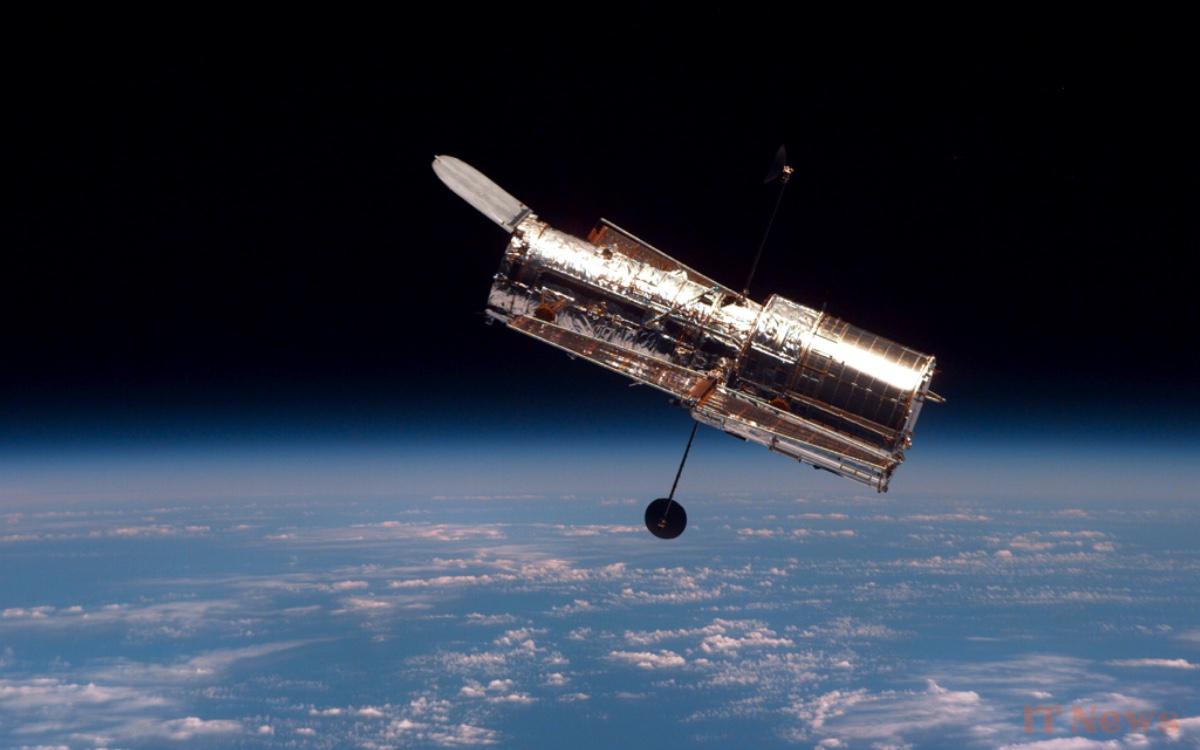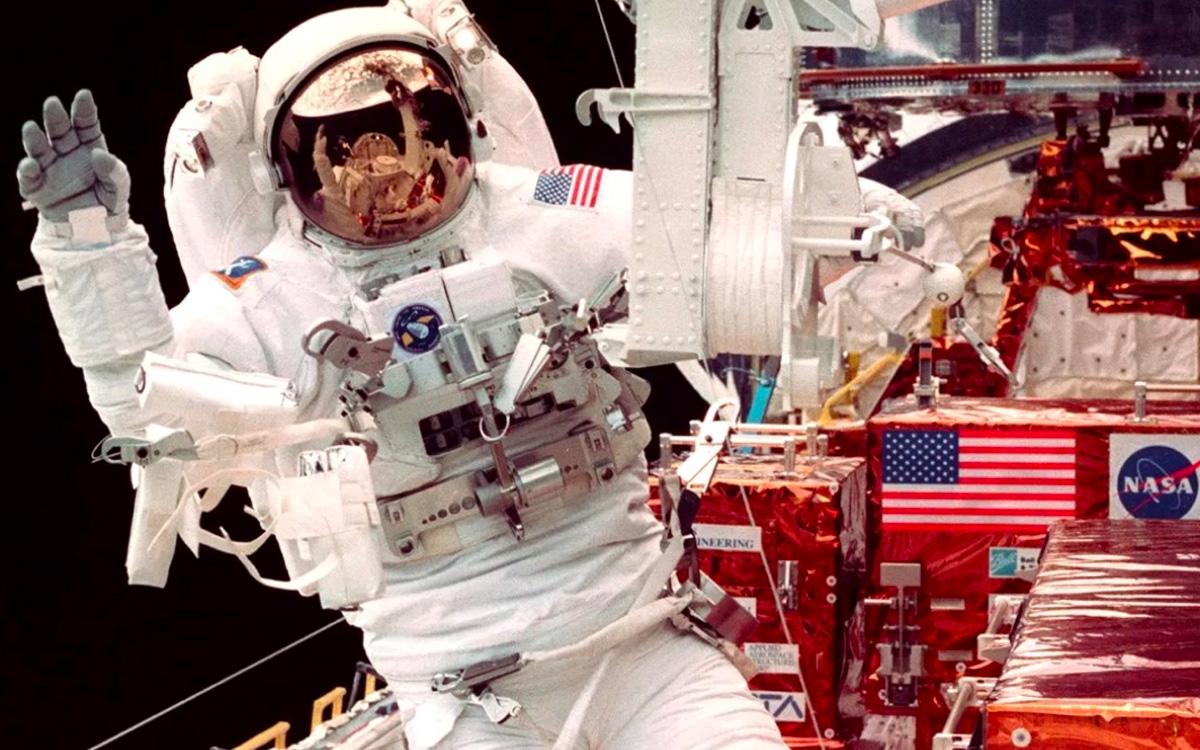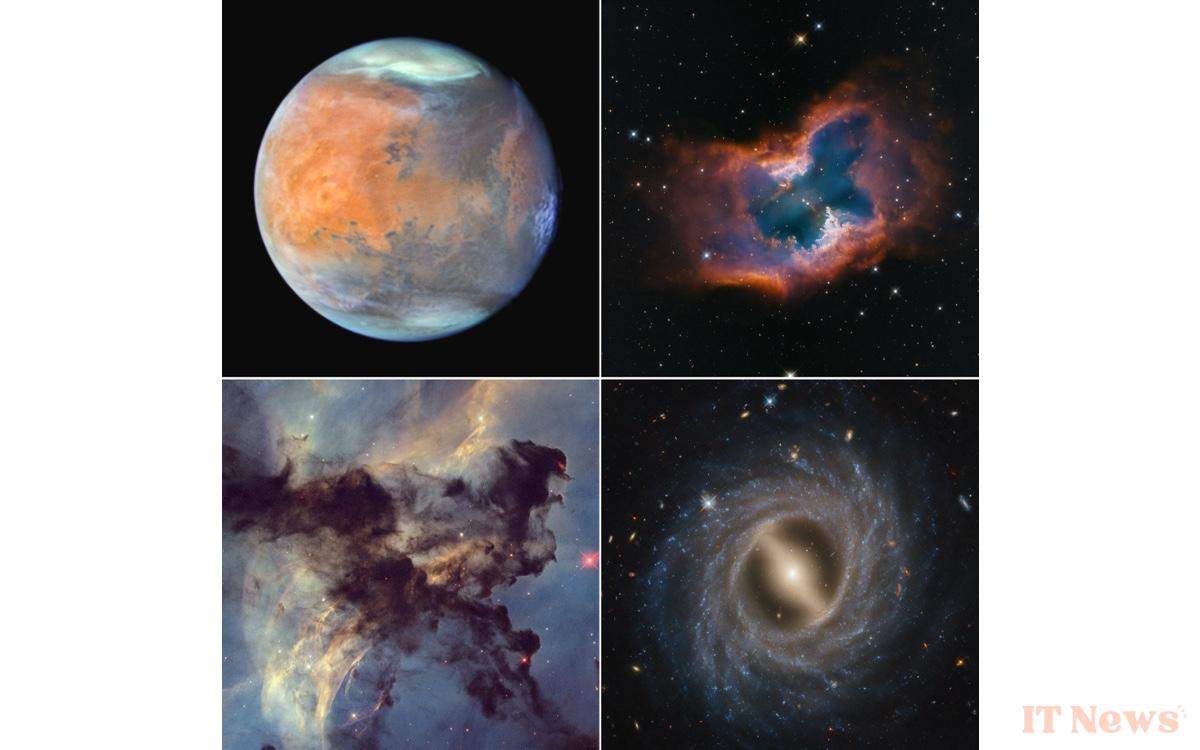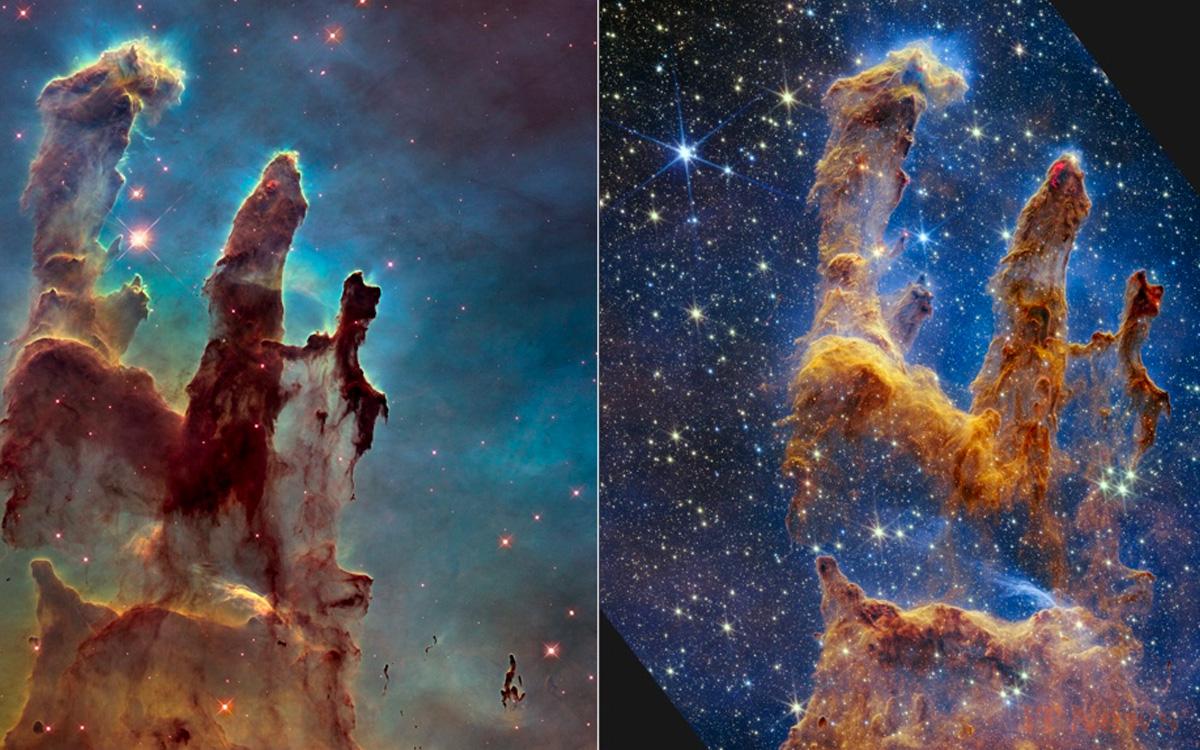Launched in 1990, this spacecraft celebrated its 35th anniversary in orbit on April 24. With its iconic images of the cosmos and revolutionary discoveries, it fundamentally changed our understanding of the universe. And most importantly, it still works! We tell you about his crazy epic.
For billions of years, light continues its frantic race through the Universe to Earth... or almost: our atmosphere blurs the vision of terrestrial telescopes. Thus, before 1990, only half of the cosmos could be observed, leaving the imagination free to think about the Universe.
The solution? A telescope ten times more precise, covering the entire optical spectrum, from ultraviolet to near infrared, and which would unravel the mysteries of the Universe... In three words: a space telescope.
A technological marvel in orbit
The idea was born in the 1920s, but it was only half a century later that ESA and NASA joined forces to create a technological jewel weighing more than 11 tons, equipped with sophisticated gyroscopes, solar wings and a primary mirror 2.4 meters in diameter.
This machine, placed in a low-Earth orbit, above atmospheric blurring, is designed to be maintained by astronauts as technology evolves. Its optimal position gives it a unique view of the cosmos. And this ever-active space telescope is Hubble.
The incredible epic of Hubble
It's April 24, 1990. The space shuttle Discovery deploys Hubble, named after the astrophysicist of the same name. The NASA commentator, faced with this spectacle, calls Hubble a "new window on the Universe". The device will keep its promises, and even more.
But this crazy epic is not without its twists and turns. Hubble was placed in orbit 575 km above the ground. And then, tragedy struck. A serious defect was discovered: the edge of the primary mirror, too flat, barely one-fiftieth the width of a hair, preventing sharp images. A daring mission was then planned to install corrective optics in December 1993. Scientists were captivated, the public fascinated. It was a success: Hubble was saved.
Between 1997 and 2009, four other servicing missions were carried out brilliantly. They modernized, replaced, and renovated the instruments. Hubble's lifespan therefore depends on the lifespan of its five gyroscopes.
2024: Only three remain. This is a good thing: the received idea says that at least three are needed for Hubble to work properly. But one of them starts to malfunction... An ingenious solution is found: the monogyroscopic mode. While its tenacity can explain the enthusiasm for Hubble, it is above all its crucial discoveries that make it an essential reference.
Also read: Have signs of life really been detected on another planet? Here's what makes scientists doubt
35 years of spectacular discoveries
Thanks to determination, skill, and teamwork, Hubble is, despite its impressive age, "more scientifically productive today than ever before" and "still in excellent technical condition," Jennifer Wiseman, the project's lead scientist, told Space.com. Its iconic images depict the dichotomy of the Universe, at once mysterious and chaotic, magnificent and threatening. And his crucial discoveries have revolutionized our understanding of the Universe and our perception of the cosmos, by making astronomy both captivating and accessible. Among them:
- The cloud of galaxies dating back to the early Universe revealed by the telescope's deep-field images,
- The precise measurement of the Universe's expansion,
- The common existence of supermassive black holes among galaxies,
- "Dark energy": a mysterious phenomenon accelerating the expansion of the Universe...
And Hubble is also a pioneer in the study of exoplanets and their atmospheres. Its exceptional longevity has made it possible to build up an impressive body of data, allowing scientists to address new questions and track evolving phenomena: the planetary seasonal variability of the solar system, jets from black holes moving almost at the speed of light, etc. Above all, Hubble has unique capabilities that are unmatched today, such as its versatile ultraviolet vision. Hubble is launching in February 2025: 1.7 million observations, from nebulous planets to galaxies, including Mars, 22,000 articles written based on his discoveries and more than 1.3 million citations,
His many groundbreaking discoveries have ushered in a new generation of space telescopes. From Spitzer to Webb, one of Hubble's strengths is its complementarity with other instruments past, present, and future. While James Webb's vision extends to mid-infrared wavelengths, better suited to studying galaxies in the early Universe, Hubble's optical and ultraviolet vision is more suited to studying the nearby Universe. By using them in pairs, "we can construct a complete cosmic story," according to Wiseman.
The Nancy Grace Roman Space Telescope is expected to join this synergy by May 2027. Hubble still has to survive until then... Because while its scientific instruments should last for a few more years, Hubble is expected to burn up in the atmosphere in the 2030s due to atmospheric drag.
Since its successor, the Habitable Worlds Observatory, won't be launched until at least 2040, some are suggesting a costly and risky robotic mission to fill the void: firing a rocket to raise Hubble's orbit and thus give it its swan song.







0 Comments